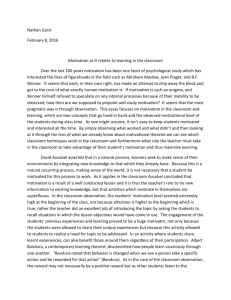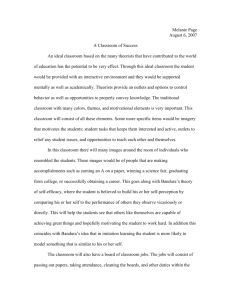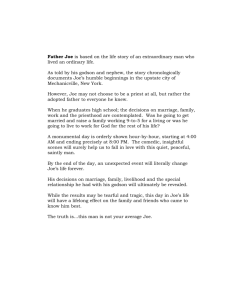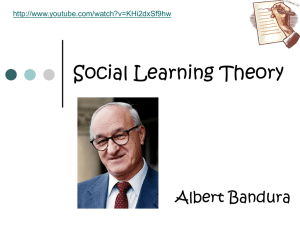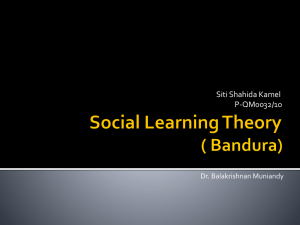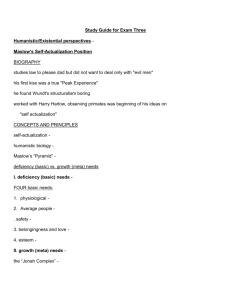Albert Bandura - Personal Web Pages
advertisement
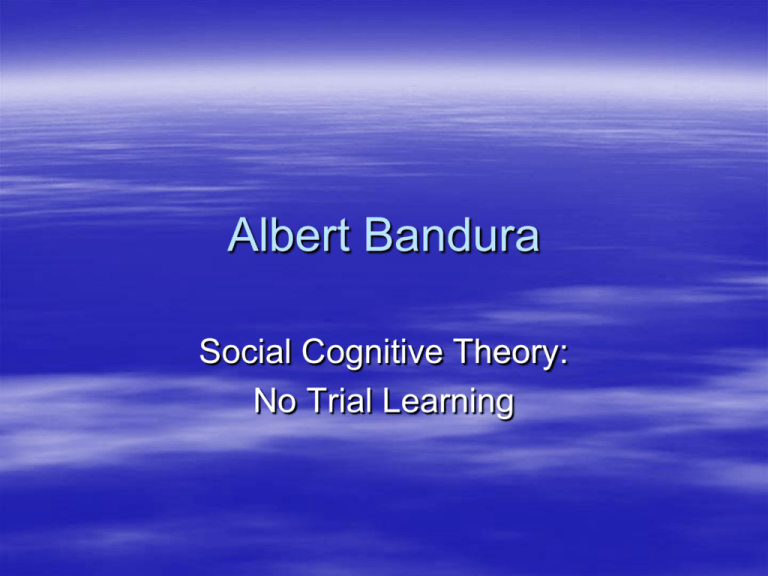
Albert Bandura Social Cognitive Theory: No Trial Learning 1. How is Bandura different from Skinner? 2. How did Bandura extend Skinner's theory of Operant Conditioning? 3. How do Skinner and Bandura differ on reinforcement? Bandura’s Beliefs 1. Infants possess a collection of innate reflexes 2. Humans are capable of using symbols to internalize (may include both rational judgments and irrational beliefs) 3. Humans have a capacity for forethought (explains how goals influence behavior) individuals are capable of anticipating and behavior is reflective of this anticipation. This explains how individuals demonstrate new behavior when not a part of their personal history. Bandura’s Beliefs (cont.) 4. Individuals learn vicariously (by observation) - this is the extension of Skinner 5. Individuals are capable of reflection of their own thoughts thus learning based upon thought rather than direct experience. Problems for Study The effects of: 1. observational learning, 2. inhibition/disinhabition (based upon the situation - sitting up straight when the teacher is near or children who begin talking more at bedtime), 3. response facilitation (a function of the behavior of others - peer pressure), 4. environmental enhancement (children will fight more if they observe parents fighting). Internal Principles 1. 2. 3. Triadic Reciprocality Behavior Environment Individual’s Personal Beliefs Bridge Principles 1. Differential Contributions (relative importance at any given time of each factor within Triadic Reciprocality) the environment may be extra important (peer group in High School) one's personality may influence the choice of tasks and behaviors (cognition and personal factors) the model may be being reinforced for "appropriate" (as seen by the individual) behavior + how close is this person to me in terms of sex age race etc. Bridge Principles (Cont.) 2. Temporal Dynamics - how the Triadic effects work over time. Gradually or immediately (consideration of other's feelings or group glee) 3. Fortuitous Determinants - the effects of chance Change Mechanisms 1. Acquisition - Attention and Retention Attention for learning to occur, individuals must pay attention and perceive (I chose Joe Namath and behaved like some of his behaviors - white football shoes, long hair, knee brace - but not all of Joe's behavior was modeled, late nights, alcohol) IN SHORT: We choose models who are influential Change Mechanisms (cont.) Retention - (how we commit events (attention) to memory) Symbolic Transformations. These confer personal meanings to events. (Joe Namath was someone to model because he was a QB, got girls and was popular. I wanted to be the same) imaginal - I imagine I'm Joe Namath linguistic - talking about and like Joe Namath and his methods of behavior rehearsal - practice - behaving like Joe Namath as often as possible Change Mechanisms (cont.) 2. performance - Production and Motivation you may acquire and retain new behavior, but performance requires a reason. It’s based upon an individual’s cognitive abilities – in short -- we need a reason. It’s all about motivation.


